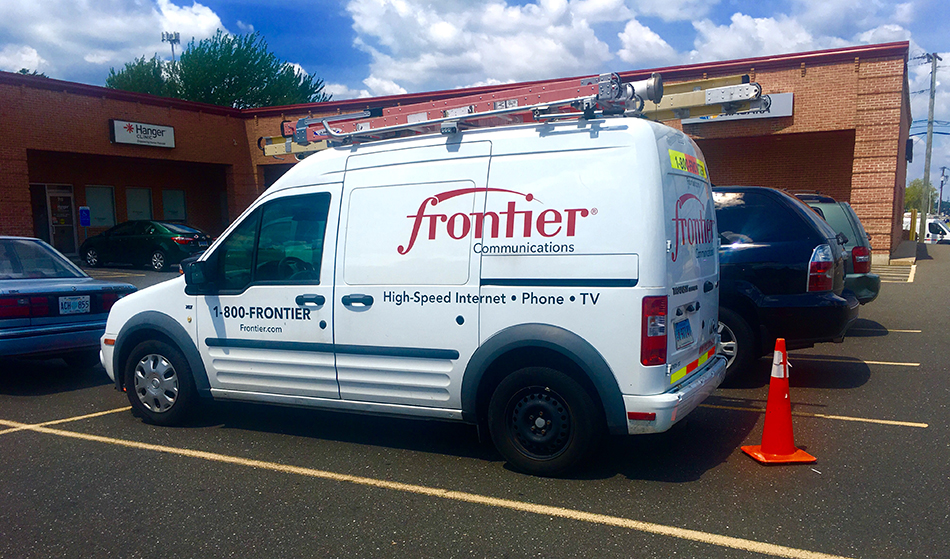Debt-Troubled Frontier Hits Reset

About four years after a major purchase that many believe was the source of most of its problems, Frontier Communications is attempting to solve them through a prepackaged Chapter 11 bankruptcy filing and a debt-for-equity swap that will erase about $10 billion in balance sheet obligations. Frontier had been expected to file for bankruptcy protection for months. The company, which has about 3.8 million residential customers in 29 states, many in rural areas, has been struggling to make payments on its $17.5 billion debt load, the majority of which is tied to its 2016 purchase of Verizon Communications Fios assets in California, Florida and Texas.
That $10.5 billion deal doubled the size of the small-market carrier, but brought with it a world of operational problems. For weeks after the deal was closed in April 2016, the switchover from Verizon’s network to Frontier’s was riddled with outages and increasingly poor service. Frontier later blamed the spotty transition partly on insufficient customer data supplied by Verizon.
“With this agreement with our bondholders, we can now focus on executing our strategy to drive operational efficiencies and position our business for long-term growth,” Frontier CEO Bernie Han said in a press release about the bankruptcy filing. “At the same time, the COVID-19 pandemic continues to impact the entire business community, and our team is focused on ensuring the health and safety of our employees and customers. The services we provide to our customers keep them connected, safe and informed, and I would like to thank our team for their continued dedication, especially in light of the current environment.”
Frontier had been expected to file for bankruptcy for months. The company said late on April 14 that it had reached an agreement with bondholders representing more than 75% of its $11 billion in unsecured bonds on the deal, which is expected to reduce its debt by more than $10 billion. In addition, the company said it has secured about $460 million in debtor-inpossession (DIP) financing, which coupled with its $700 million of cash on hand give it about $1.1 billion in liquidity. Frontier said it filed for Chapter 11 protection with the U.S. Bankruptcy Court for the Southern District of New York on April 14 and will continue to operate normally as it goes through the process.
Frontier expects to emerge from Chapter 11 with about $7.5 billion in debt, considerably less than the $17.5 billion in leverage it had carried previously. The company has admitted it has underinvested in fiber over the years, and in the 10-K it said it would need to invest only about $1.4 billion to build out its network — part of that possibly coming from federal programs — through 2024.
In a presentation to bondholders that was made public last month, Frontier admitted its broadband speeds are lacking compared to competitors, and that only 3 million of the 14 million residences able to access its internet service are passed with fiber. Most of Frontier’s broadband customers have slower speed digital subscriber line service. About 30% of its customers have service with download speeds of 0-12 megabits per second; 35% have download speeds of 13-24 Mbps and only 6% have download speeds of 24 Mbps or higher. The company has managed to survive mainly because in many of its markets it is the only provider.
Fueled for a Rebuild
The smarter way to stay on top of the multichannel video marketplace. Sign up below.
With the DIP financing and the planned sale of its systems in Washington, Oregon, Idaho and Montana for $1.352 billion to Northwest Fiber — a deal it agreed to earlier last year — Frontier should have more than enough capital to go through with the rebuild. The Northwest Fiber transaction is slated to close on April 30.
The FCC said it would make sure Frontier continued to fulfill its obligations to keep its customers connected, which has become especially important during the pandemic. “As the company undertakes this process, we expect it to comply with all Commission regulatory obligations,” Kris Monteith, chief of the FCC’s Wireline Competition Bureau, said. “We will be vigilant in ensuring both that Frontier’s customers stay connected to vital 911, voice and broadband services and that Frontier continues to put the federal funds it receives through the Connect America Fund and other universal service programs to work for the American people.”
In a statement, the Communications Workers of America, which represents some Frontier employees, hoped that workers would have a voice in the reorganization. “Frontier’s front-line employees have a unique insight into the challenges — and opportunities — that the company faces. Unfortunately, Frontier’s management did not engage with CWA members or leadership as part of their negotiations with creditors, denying their workforce a much-needed voice in the future of the company,” it said. “CWA members expect to have input in the direction of the company as the bankruptcy process goes forward.”
